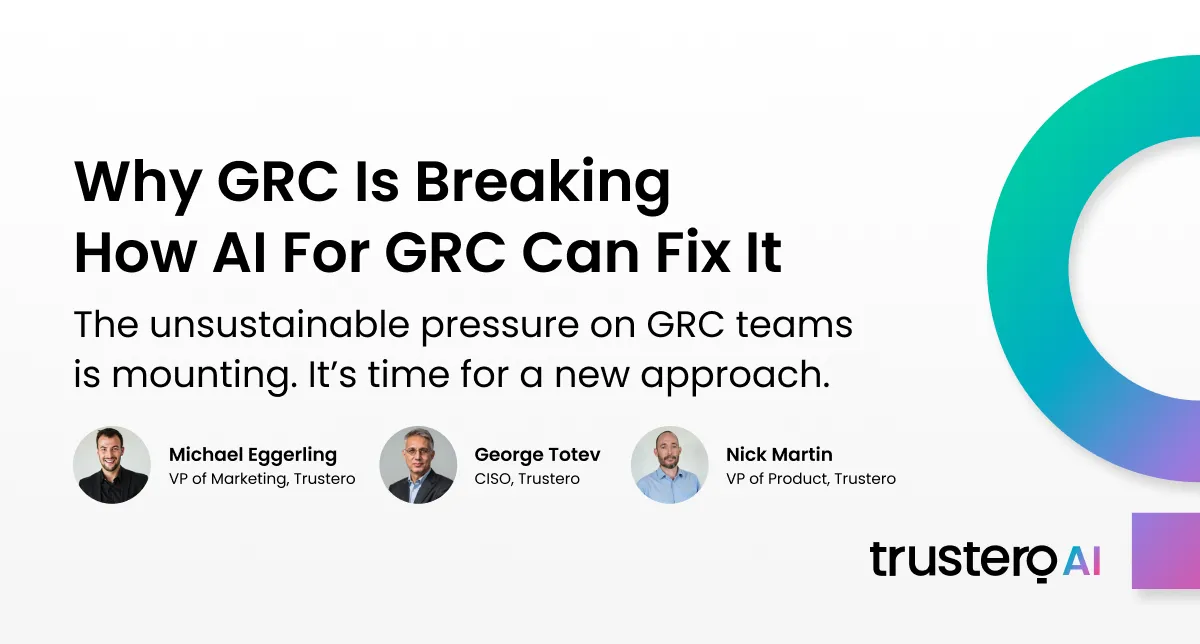The world of governance, risk, and compliance (GRC) is under pressure. Regulatory complexity is accelerating. Organizations are juggling multi-cloud environments, third-party dependencies, and growing stakeholder expectations. And GRC teams are struggling to keep up.
In a recent conversation between the Trustero team, our CISO George Totev, VP of Product Nick Martin, and Head of Marketing Michael Eggerling discussed what’s breaking in GRC and how AI can help.
The Problem: GRC Can’t Keep Pace
GRC teams know what to do, but they simply don’t have the time or resources to do it. New frameworks like the EU AI Act and DORA are emerging just as teams are still managing SOC 2, ISO 27001, HIPAA, and others. As George explained, this imbalance creates “shadow risk acceptance", risk that gets ignored because teams don’t have the bandwidth to address it.
The current state isn’t sustainable.
The Case for AI in GRC
The answer isn’t replacing GRC professionals with AI. It’s helping them reclaim capacity. AI can handle the repetitive, time-consuming tasks that clog up a team’s day like evidence collection, control mapping, and policy assessments. That frees human experts to focus on what matters: strategic thinking, collaboration, and long-term risk management.
As Nick put it, AI gives teams a “quantitative push forward.” And just as important, it creates the space for better, more proactive decision-making.
What Makes AI for GRC Different
Not all AI is built for the messiness of GRC. Generic chatbots or static workflows aren’t enough. GRC work requires judgment, language understanding, and transparency.
Purpose-built AI for GRC must:
- Work inside existing GRC workflows
- Evaluate real evidence and operational data
- Provide transparent, traceable answers that users can trust
Trustero’s approach is built on all three. The platform doesn’t just automate, it collaborates.
A Real-World Example: Policy Design Assessments
One example: policy design assessments. Traditionally, evaluating a company’s policy library against a framework could take days, or longer. With Trustero, the system ingests documents, checks for alignment with framework criteria, and generates results in minutes. That’s a game changer for resource-constrained teams.
The Future: AI That Works Like a Colleague
Looking ahead, AI in GRC will become more conversational, more capable, and more embedded in daily work. The goal isn’t just automation, t’s collaboration. Teams will ask questions, get answers, and take action—all through a chat-first experience.
This approach also addresses the problem of institutional knowledge. When a team member leaves, the AI still knows the context. Tribal knowledge becomes shared knowledge.
Closing Thoughts
GRC doesn’t need more dashboards. It needs help. True AI for GRC offers that help—not by replacing people, but by empowering them. It helps teams move faster, reduce risk, and focus on high-impact work.
The path forward is clear. Now it’s about taking the first step.

